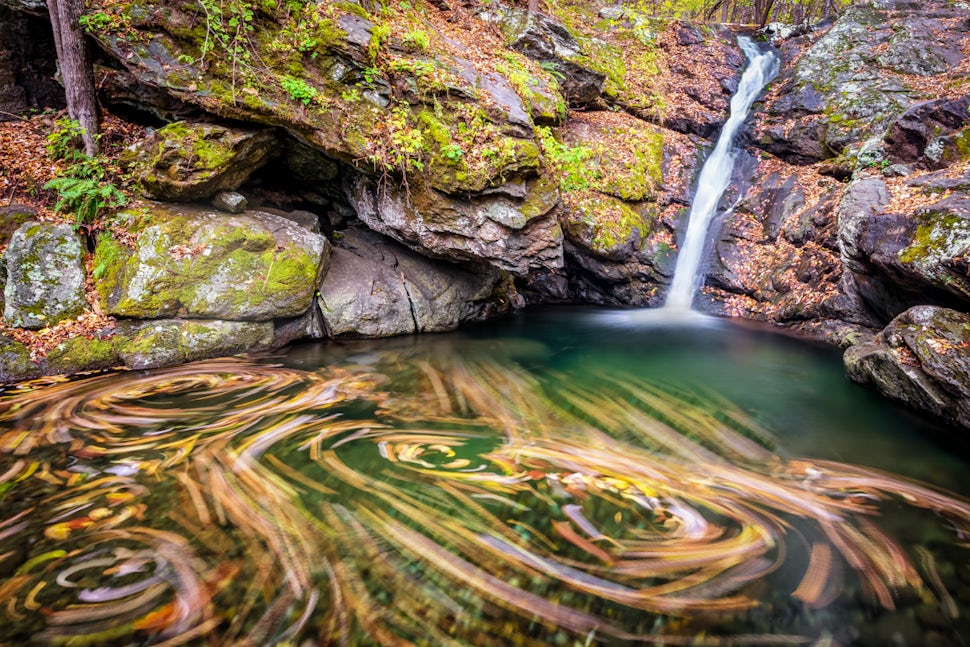7 Essential Landscape Photography Composition Techniques
Are you looking for a fast and cheap way to improve your landscape photography? These seven composition techniques that, when applied, will help you improve your landscape photography skills.

1. The Rule of Thirds
The rule of thirds is one of the most used rules of composition and one of the most powerful. To apply this rule, visually divide the view finder into 3 equal parts both horizontally and vertically to create a grid. Next, place the subject at one of the intersections. Another use of the rule and the fastest way and easiest way to improve the quality of your landscape images is to the move the horizon from the middle of your view finder to along the line at top 1/3 or bottom 1/3 of the view finder. When both parts are combined, the rule of thirds can create a strong impact on the landscape image. In the image below, the tower is located on the left third of the frame and intersects the bridge at the bottom third of the frame.

2. Leading Line
When landscape photographers incorporate leading lines into their images, it helps guide the viewers’ eyes to the subject. A road, coast line or mountain ridge are just a few examples of leading lines. When the leading line is a diagonal line, it will not only help guild the viewers’ eyes to the subject, but it can also add depth to the image by showing the distance between elements in the foreground and background.

3. Framing
Seeing your subject through a frame is a powerful way to draw your viewers' eyes to what is important. Landscape photographers can use many things to frame the subject including a window, tent door, trees branches, and even a cave. Landscape photographers can become very creative on what to use to frame the subject, but keep in mind, you want the frame to add to the final image and not become the focal point or be too distracting. When selecting a frame, make sure it is not too bright, the human eye naturally travels to bright objects. Also, make sure the the camera is focused on the the subject and not the fame, because, like bright objects, the human eye naturally travels to the sharpest point in the image.

4. Scale
When you take a 3D world and turn it into a 2D image, depth perception and the size of the subject can get lost in the transformation. When a landscape photographer wants to convey how large or small the subject is in the image, they typically use an object that is recognizable such as a person or a vehicle. When the recognizable object is next to the subject, it emphasizes the actual size of the subject. For example, when a person is standing next to a waterfall, the viewer automatically understands how large that waterfall actually is. In the image below the human element provides the viewer a scale for the size of the valley and surrounding mountains.

5. Clear Subject
In photography, simplicity is key. When a picture is too busy and does not have a clear subject, the viewer does not know where to look and where to focus their attention. This can lead to the viewer becoming frustrated and then no longer engaging in the image. To prevent this, landscape photographers make sure they have a clear subject for their viewers to focus their attention.

6. Patterns
Nature is full of patterns, and once a landscape photographer teaches his/her eye to spot them, they are easy to find. The flowers next to the trail, ripples in the lake, leaves on the trail, or a hillside full of trees are a few examples of patterns. In order for the pattern to have the full effect in your image, it must be isolated from everything else and take up the entire frame. This will convey to the viewer that the pattern continues beyond the edges of the images.

7. Know when to break the rules
Ansel Adams said, “There are no rules for good photographers. There are just good photographers.” After you become comfortable with the above composition techniques and how to apply them to your images, you are now ready to break them. There is no right or wrong way to compose your image, but applying these techniques to your image could make them more appealing. Someone told me a when I first got started in photography, “If you want to break a composition rule, you need to learn and understand it first. This will to ensure that when you break the rule, it will be more effective.” Just keep in mind, an image that is poorly composed will result in the viewers not having a clear subject or focal point causing them to be unsure about where they should look and to lose interest in your image.

Visit Blue Ridge Imagery to lean more photography skills.
Click here for 7 Essential Landscape Photography Tips which will help you improve your photo skills to showcase your next adventure.
We want to acknowledge and thank the past, present, and future generations of all Native Nations and Indigenous Peoples whose ancestral lands we travel, explore, and play on. Always practice Leave No Trace ethics on your adventures and follow local regulations. Please explore responsibly!
Do you love the outdoors?
Yep, us too. That's why we send you the best local adventures, stories, and expert advice, right to your inbox.








